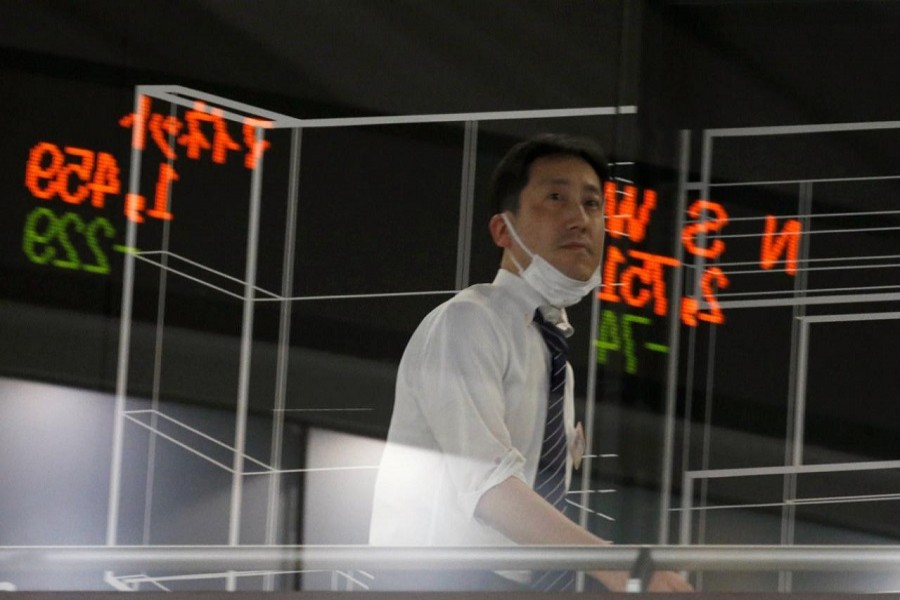Asian share markets found a semblance of calm on Monday as S&P futures extended their bounce, though bond investors were still fretting about the risks from looming US inflation data.
MSCI’s broadest index of Asia-Pacific shares outside Japan edged up 0.8 per cent, having suffered a 7.3 per cent drubbing last week.
Both South Korea and China gained 0.8 per cent, while Japan’s Nikkei was closed for a holiday.
E-Mini futures for the S&P 500 rose 0.5 per cent, adding to a late bounce on Friday. Yet a relatively sharp 12 tick drop in Treasury bond futures suggested it was too early to sound an all-clear on volatility.
“A massive buildup in market leverage has been partially unwound in the blink of an eye and morphed into something far more broad-based,” said Chris Weston, chief market strategist at broker IG.
“One could argue that it is the US bond market that is the driving force, and will remain so through this coming week.”
Particularly challenging will be US consumer price data on Wednesday given it was fears of faster inflation, and thus more aggressive rate rises, that triggered the global rout in the first place.
Median forecasts are for consumer price inflation to slow a little to 1.9 per cent in January, mainly due to the base effect of a high reading in January 2017, while the core measure is seen ticking down to 1.7 percent.
A result in line with or below expectations would likely be a big relief, while anything higher could well spook investors, lift bond yields and batter stocks.
Aziz Sunderji, an economist at Barclays, suspects the inflation scare will prove to be transitory.
“Tight jobs markets will pressure wages upwards, but technology, automation, and globalisation are important – and slow moving – forces acting in the opposite direction,” Sunderji argued in a note to clients.
“Paradigms don’t shift on a dime. In our view, the recent market turmoil is a bump in the road, not a wholesale change of direction.”
The return of volatility
But what a bump it was. The benchmark S&P 500 fell 5.2 per cent last week, its biggest decline since January 2016. Ninety-six S&P 500 stocks were down 20 per cent or more from their own one-year highs, according to Thomson Reuters data.
In Asia, Hong Kong’s high-flying shares shed almost 10 per cent for the week, while Japan lost 8.1 per cent and South Korea 6.4 per cent.
The pivotal gauge of S&P 500 volatility, the VIX, remained relatively elevated at 29 per cent.
Yields on US 10-year Treasury paper touched a four-year top of 2.885 per cent, moving ever further above the S&P 500’s dividend yield of 2.34 per cent.
The ascent of yields offered some support to the US dollar, which gained 1.4 per cent on a basket of currencies last week to currently stand at 90.186.
The euro clawed back 0.3 per cent to $1.2276 on Monday, after losing 1.8 per cent last week.
Carry currencies, including the Australian dollar and many emerging market currencies, were also casualties of the rush from risk, which in turn benefited safe harbours such as the Japanese yen and Swiss franc.
The dollar was hovering at 108.65 yen, having fallen 1.3 per cent last week.
Commodities were also paring their losses, with gold 0.6 per cent firmer at $1,323.76 an ounce and off a five-week low of $1,306.81.
Brent crude futures rallied 47 cents to $63.26 a barrel, while US crude for April added 54 cents to $59.74. Brent lost nearly 9 percent last week and US crude dropped 10 per cent, the steepest falls since January 2016.


